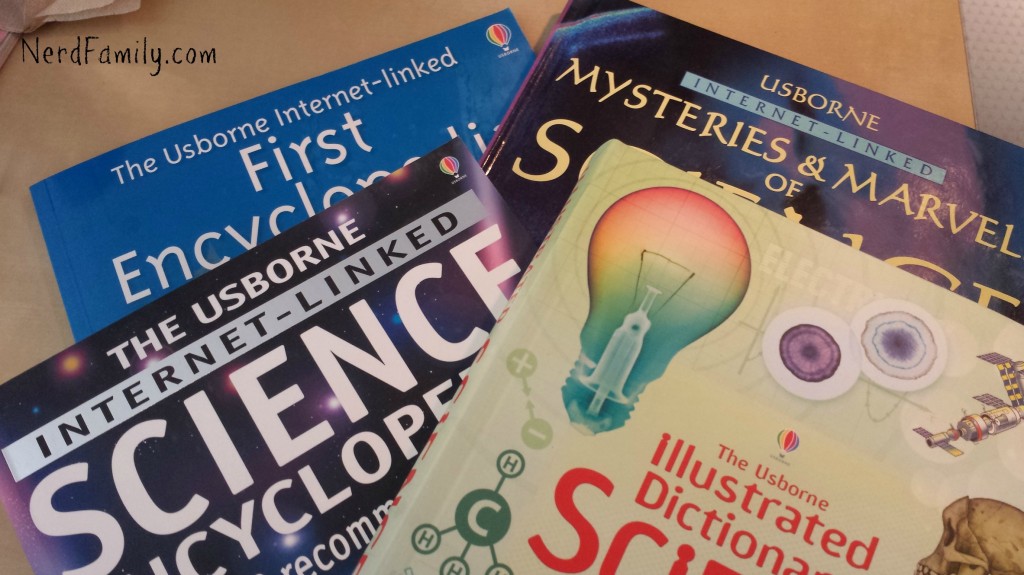I am a big believer in having lots of engaging reference books around. Then kids can read them for fun, to answer their questions or to actually help with homework. We have a fun collection of science books that we highly recommend for everyone to have on hand! (At 1 very short point in time I sold Usborne just to receive a discount on their reference books.)
The Usborne Illustrated Dictionary of Science: This covers Chemistry, Physics and Biology in one volume but I believe that they are available individually. The colors are vibrant and the definitions are clear and specific. Great for any level, even up to high school.
The Usborne Internet-Linked Science Encyclopedia: This is a super fun encyclopedia. It covers facts across the board in science from mixtures & compounds to plants to the human body to energy. It isn’t written in a long a boring form but littered with graphics and bullet point facts. It also has a quick link compliment that has websites that can take the learning further!
Usborne Mysteries and Marvels of Science: This isn’t an encyclopedia or dictionary but I still consider it a reference book. It has a bunch of mysteries and marvels that kids always wonder about. It has things like force and color and even silicon. This is also an internet linked volume so it has complimentary websites that can take their investigation further.
First Encyclopedia of Science: I really believe in young elementary reference books. It is great fun for the kids to look up interesting subjects and it gets them used to using things like encyclopedias. This is a super colorful volume and has a great variety of of subjects. This is also an internet linked book so there are a variety of complimentary links that are age appropriate!
100 Science Experiments: This is a volume of easy science experiments that kids can easily do, almost completely alone. These aren’t high level science fair projects but projects that actually teach great concepts. There are lots of illustrations for the young scientist to actually see what they should be doing.
730 Easy Science Experiments: This book is aimed at students any where from 4th grade all the way up through high school. All the experiments are conducted with every day materials. Some are high level like testing ph levels. Some are super simple like using the gluten in bread as an eraser. The experiments are laid out well but don’t explain everything about the results so students can actually research the why’s and do reports!



